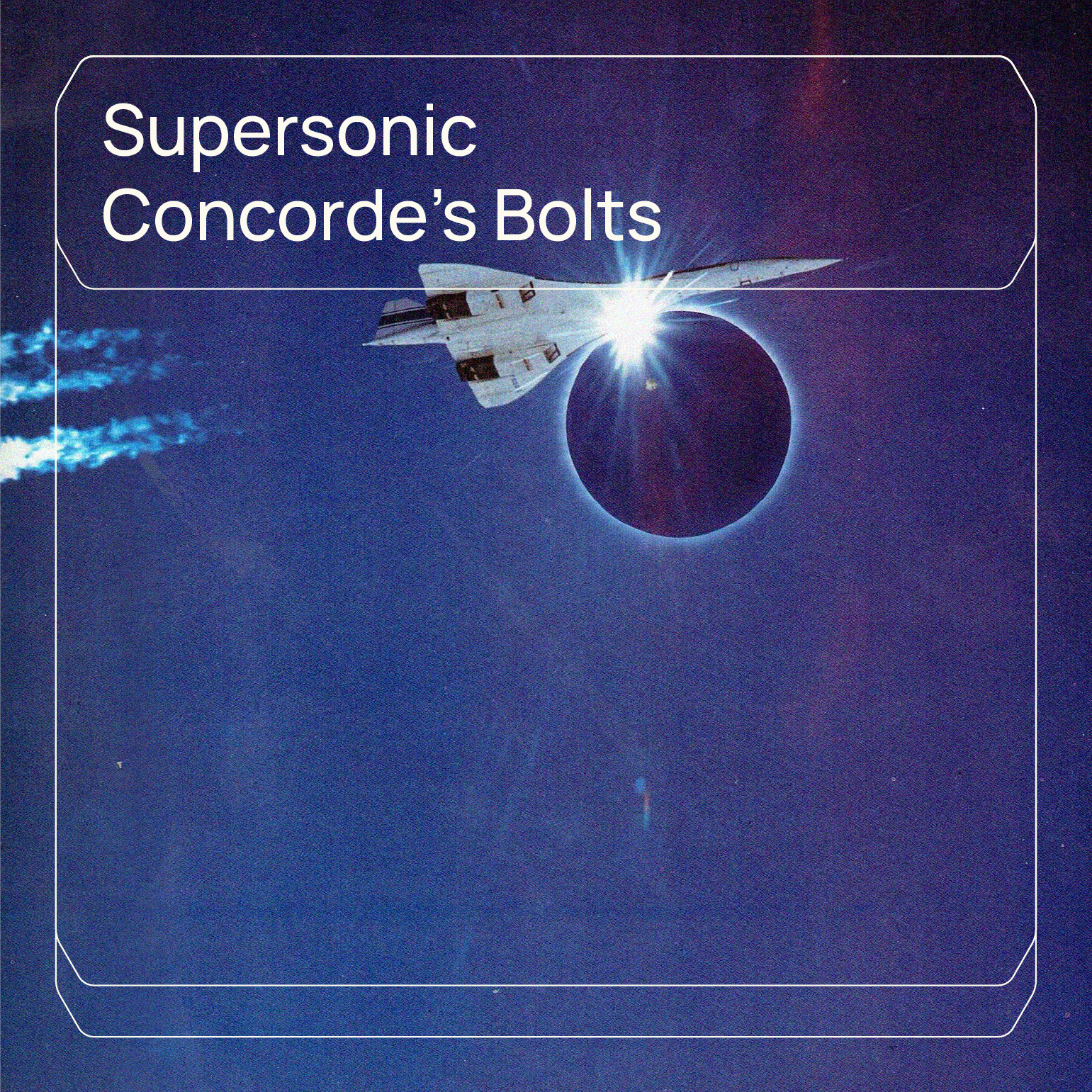Tsamouris, the Fastener Specialists©
United Airlines wants to bring back supersonic air travel, with plans to buy 15 Overture airliners from Boom
Supersonic, a start-up that could become the first to offer ultrafast commercial flights since the Concorde
stopped flying in 2003. But long before Boom’s ambitious plans, the Concorde’s innovative design, including
its unique bolt-together nozzles, pushed the boundaries of aviation technology.
The Concorde’s iconic rear power plant comprised a variable exhaust system with a primary nozzle and a
secondary nozzle, the latter featuring an arrangement of hinged ‘buckets’ or ‘clamshells’ that controlled the
exhaust flow during all stages of flight. This innovative design not only enhanced performance but also
helped reduce noise levels.
The primary nozzle, which formed the jet-pipe exit, consisted of 36 petals — 18 actuated and 18 followers —
moved by 18 pneumatic jacks. These jacks, connected by supply tubes and a manifold, allowed the nozzle’s
outlet area to be varied, optimizing engine efficiency throughout the flight envelope.
The flange of the primary nozzle’s convergent section had 90 holes to accommodate bolts, which secured
the section to the support ring and retained the petal hinge point yokes and double-yokes. Additionally, two
union bodies were riveted to the convergent section for fitting the pressure tapping tube of the re-heat
detection system.
Surrounding the primary nozzle, the secondary nozzle assembly served multiple functions, including
supporting the primary nozzles and buckets, channeling secondary air, and transmitting loads to the
airframe.
The buckets themselves were attached to the secondary nozzle via hinged points, with each bucket having
two such points. During takeoff, the buckets were set to 21 degrees, creating a ‘jet-pump’ effect that reduced
drag. As the Concorde accelerated through Mach 1.1, the buckets opened progressively to form a divergent
duct, optimizing thrust in supersonic flight. On landing, the buckets closed to deflect exhaust flow forwards,
acting as thrust reversers.
The Concorde’s bolt-together nozzles, along with its intake system, were responsible for approximately half
of the aircraft’s thrust at Mach 2, showcasing the critical role of these components in enabling supersonic
flight.
As United Airlines and Boom Supersonic work to bring supersonic travel back to the skies, they stand on the
shoulders of the Concorde’s designers, who crafted a marvel of engineering that pushed the limits of what
was possible in aviation. At Tsamouris, we understand the importance of precision and innovation in
fastening solutions.
